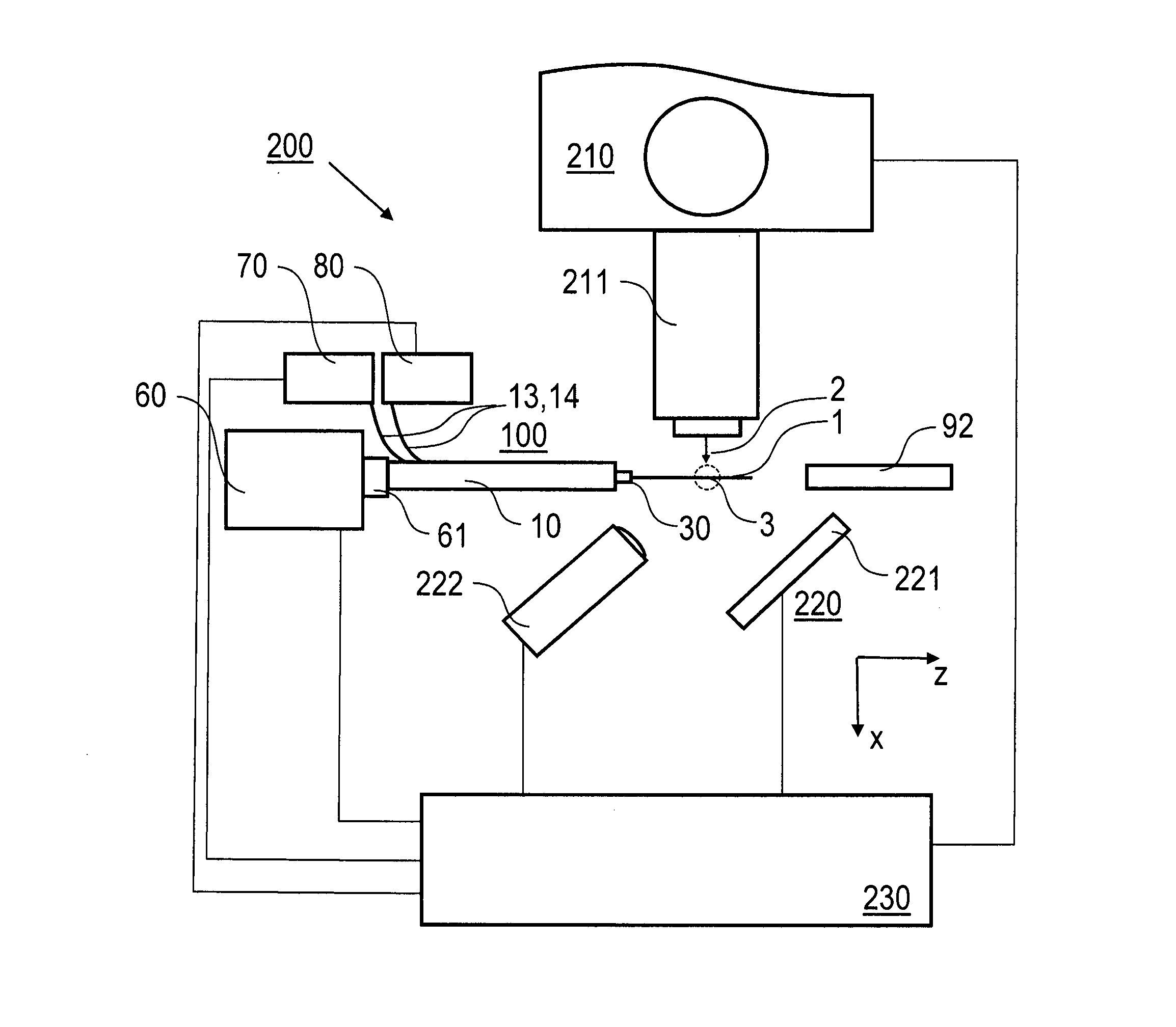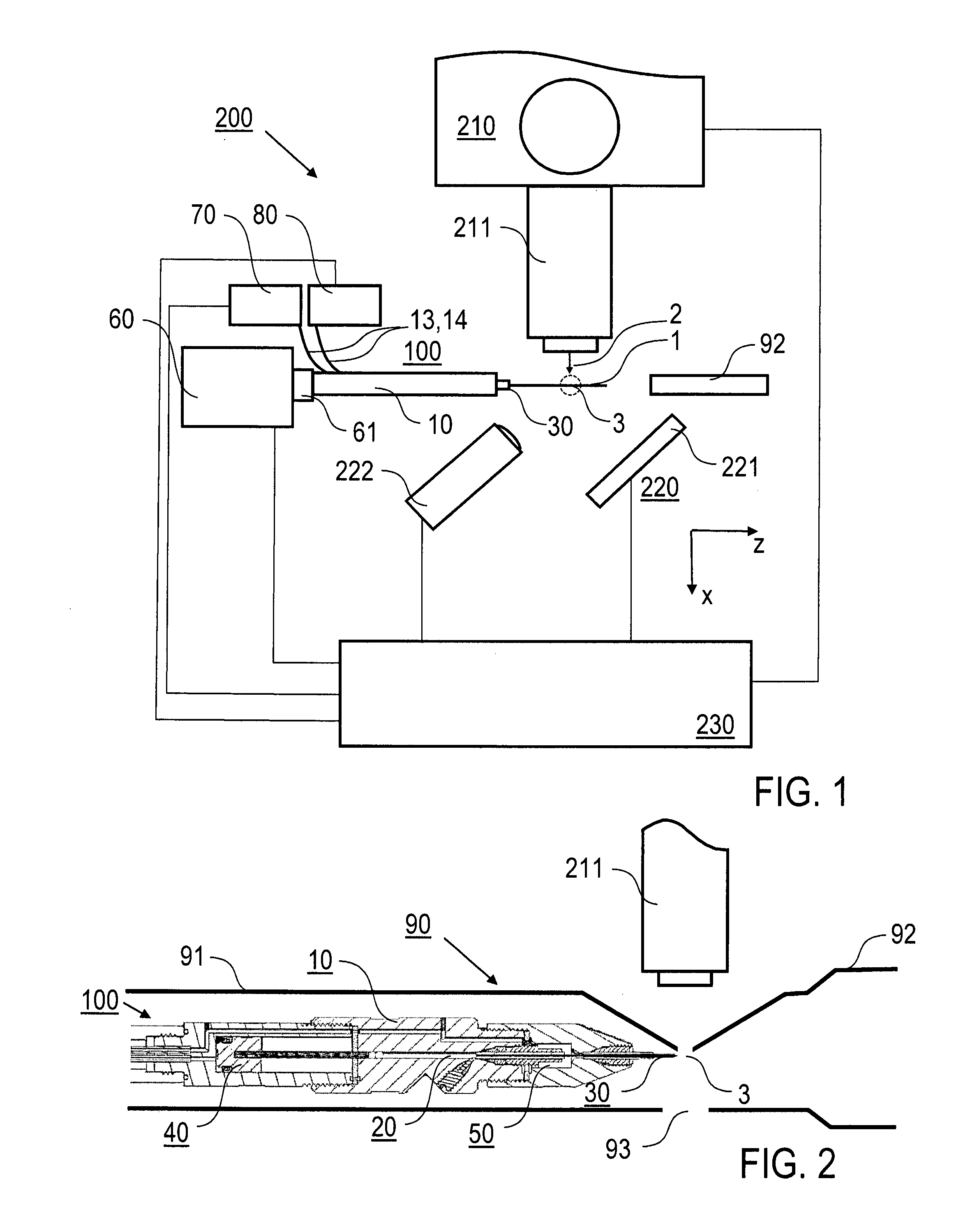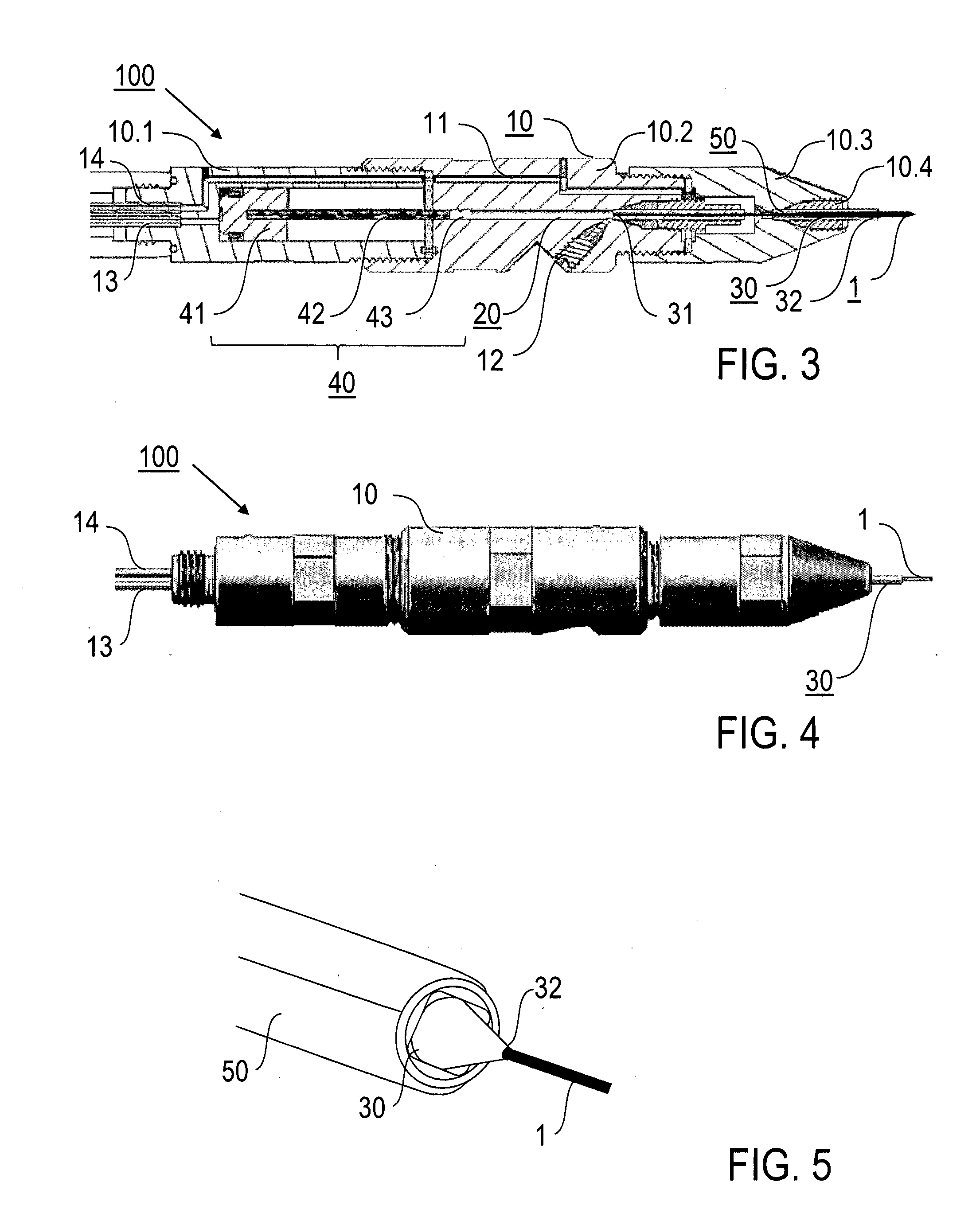Method and Devices for X-Ray Crystallography, in Particular with Microcrystals of Biological Macromolecules
a micro-crystal and x-ray crystallography technology, applied in the field of x-ray crystallography, can solve the problems of limiting the resistance of biological samples to x-ray damage, affecting the quality of biological samples, so as to achieve high molecular weight, high viscosity liquid, and easy adjustment of the viscosity of the sample stream
- Summary
- Abstract
- Description
- Claims
- Application Information
AI Technical Summary
Benefits of technology
Problems solved by technology
Method used
Image
Examples
Embodiment Construction
[0057]Preferred embodiments of the invention are described in the following with exemplary reference to the serial X-ray crystallography investigation of lysozyme microcrystals carried in a lipidic cubic phase, wherein operational parameters of the injector nozzle device are selected in dependency on the particular measuring conditions, like e.g. the X-ray exposure time, the photon flux, the focal size, the concentration of the microcrystals in the LCP and the LCP viscosity. It is emphasized that the implementation of the invention is not restricted to the described example, but rather possible with microcrystals of other molecules, included in LCP or other high-viscosity media and investigated using other measuring conditions. In particular, irradiating the sample stream and collecting the diffraction images can be done in vacuum or an inert gas atmosphere, like e.g. helium, rather than at ambient air pressure.
[0058]The X-ray source device used according to the invention for creati...
PUM
| Property | Measurement | Unit |
|---|---|---|
| diameter | aaaaa | aaaaa |
| diameter | aaaaa | aaaaa |
| flow rate | aaaaa | aaaaa |
Abstract
Description
Claims
Application Information
 Login to View More
Login to View More - R&D
- Intellectual Property
- Life Sciences
- Materials
- Tech Scout
- Unparalleled Data Quality
- Higher Quality Content
- 60% Fewer Hallucinations
Browse by: Latest US Patents, China's latest patents, Technical Efficacy Thesaurus, Application Domain, Technology Topic, Popular Technical Reports.
© 2025 PatSnap. All rights reserved.Legal|Privacy policy|Modern Slavery Act Transparency Statement|Sitemap|About US| Contact US: help@patsnap.com



